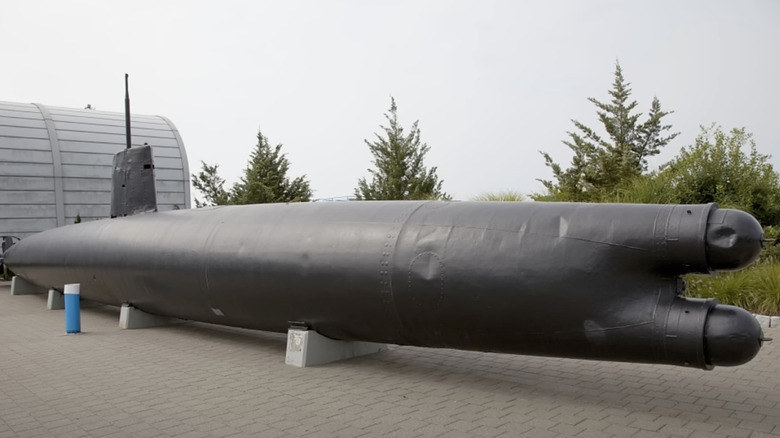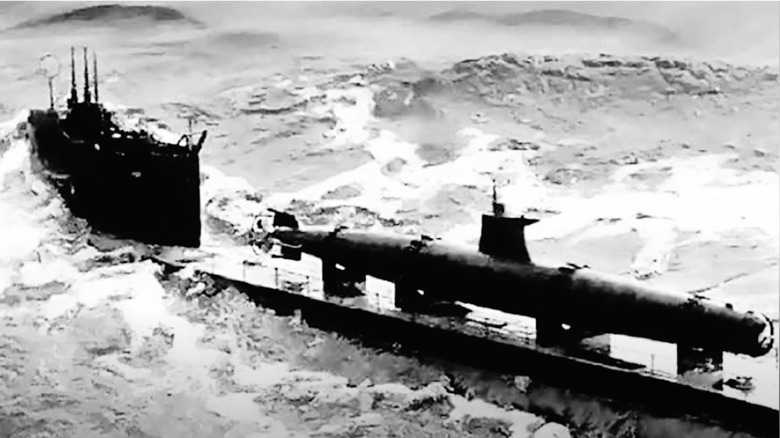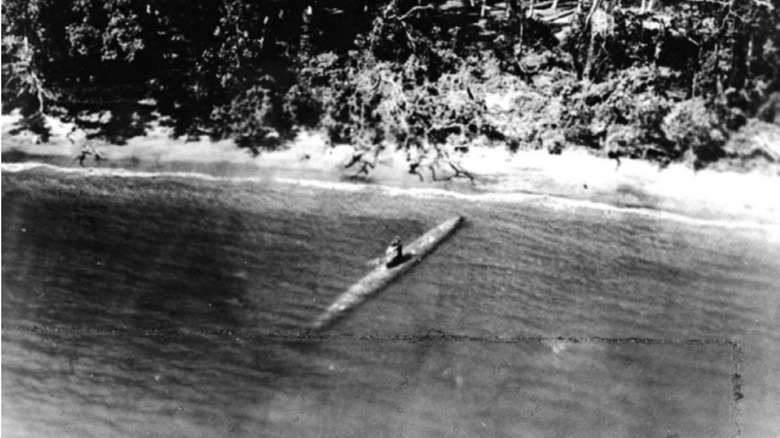Japan's Midget Submarines Of World War II: Pearl Harbor And Beyond
The Imperial Japanese Navy, which attacked America on December 7, 1941, dragging the country into WWII was arguably the strongest on the planet. It consisted of 10 battleships; 10 aircraft carriers; 38 cruisers; 124 destroyers; 67 mainline submarines along with 300 midget submarines and nearly 200 other assorted support and auxiliary ships. Japanese expansionism in the Pacific was led by this fleet, laying waste to opposition navies in what was effectively an seafaring blitzkrieg.
Stealth tactics combined with the need to strike first and to strike hard, factored prominently into Imperial Japan's naval power and doctrine. The need for stealth especially led to the creation of the midget submarine. The Japanese constructed four types of midget submarines during the war, the Type A (Ko Gata), Type B (Otsu Gata), Type C (Hei Gata), and Type D (Tei Gata). The Type A was the most common submarine of the three with the following specifications: it was 78.5 feet long, with a crew of two, could travel 19 knots submerged and was equipped with two 17.7-inch torpedoes. Their small size and ability to operate in relatively shallow waters made them a perfect fit for the strike at Pearl Harbor.
Pearl Harbor and beyond
The Japanese transported five midget submarines for the attack aboard I-type submarines. Deployed the night before the air attack from seven miles away, these craft made for the mouth of Pearl Harbor. They were intended to fire torpedoes during the air assault, then dive and head back out of the harbor to rendezvous with the transport submarines.
However, the mission went off the rails. The destroyer U.S.S. Ward spotted the periscope of one of the submarines and began firing on it at 6:45 a.m. on Dec. 7, 1941. The Ward crew reported, "We have dropped depth charges upon sub operating in defensive area." A second submarine was sunk in the harbor by U.S.S. Monaghan while a third was captured the following day never having made it into the harbor. The remaining two disappeared during the attack with one of these having yet to be found.
Midget submarines served as part of the Imperial Japanese Navy throughout the war, seeing action far beyond Pearl Harbor. In fact, the Type A (50 were built during the war) was deployed to Sydney, Diego Suarez, the Aleutian Islands, and Guadalcanal. The Japanese at Guadalcanal used the midget submarines as a way to disrupt the Marines' supply ships since the use of its larger submarine fleet was not possible due to strong anti-submarine measures. The results were mixed. One submarine torpedoed the U.S.S. Majaba only to be chased off and eventually beached, with its two-man crew being the first to return alive. Subsequent midget attacks followed with some mechanical issues while others did score hits, including on the U.S.S. Alchiba. The Japanese continued attacking American forces at Guadalcanal right up until December 12, 1942.
Valuable asset or waste of time?
The Japanese had put to sea during World War II a submarine fleet that was unmatched as to its diversity in the entire world. Large, globe-spanning models such as the I-400 (Sen Toku Type) with the ability to launch floatplane bombers were the polar opposite of the stealthy, small-crewed midget submarine but both figured prominently into Japanese naval doctrine. Midget submarines would be utilized until the very end of the war, with production never slowing down. In fact, there were 115 Type D midget submarines ready for service with nearly 500 hulls under construction when the war ended, proving Japan's commitment to the midget submarine concept.
What was the value then for the Imperial Japanese Navy in using midget submarines during the war? Considering the failure of the midget submarines to affect any engagement decisively or substantially, such as at Pearl Harbor and Guadalcanal, then it must be seen as a waste of time and failure. The midget submarine was creative and had potential, but it was wasted on attacking warships as opposed to merchant ships where it would have been more effective based on its size and capability. The Japanese midget sub will always be remembered for what it did do at Pearl Harbor (not much) and for what it did not do elsewhere (secure Japanese victories).


